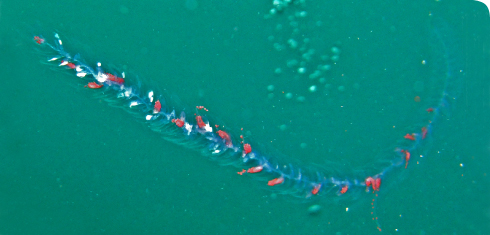Agalma elegans
Agalma elegans is a siphonophore. These marine invertebrates belong to the same group of animals as corals and jellyfish, the Cnidaria. Siphonophores are sometimes known as string jellies.
This particular species occurs sporadically around the UK coast, usually some distance offshore, and is most often encountered by scuba divers. It enters the coastal waters of the southwest and western UK from the European shelf waters of the northeast Atlantic.
Species detail
A. elegans is:
- fragile
- gelatinous
- extremely transparent (which makes it hard to photograph underwater)
Although the organism is sometimes called a colony, it is actually an individual. It typically measures 30-100cm in length when mature.
This string jelly usually lives below the surface, to avoid turbulence, in the water column down to 400m.
It can be distinguished from other UK string jellies by the groups of orange-red stinging batteries on its main stem.
-

Taxonomy
Learn about the key features of Agalma elegans, including how they help the animal to float and swim by jet propulsion. Discover how to identify this species.
-

Distribution
Discover where Agalma elegans is found.
-

Biology
Learn about the lifecycle of Agalma elegans, and how it reproduces.
-

Behaviour
Agalma elegans is able to lure prey by using its orange-red tentilla to mimic swimming copepod or other small zooplankton. Toxin then immobilises captured prey. Find out more about the behaviour of this species.
-
References
Get reference material for Agalma elegans.
Images
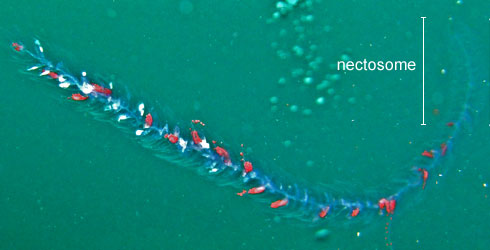
Agalma elegans swimming, with the siphosome in the foreground and the nectosome in the background. Total length is approximately 1m.
© Emily Priestley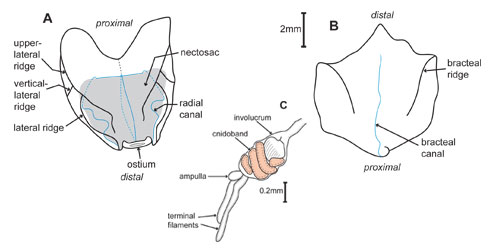
Agalma elegans: upper view of nectophore (A), upper view of bract (B), lateral view of tentillum (C). (Figure by Barry Mapstone)
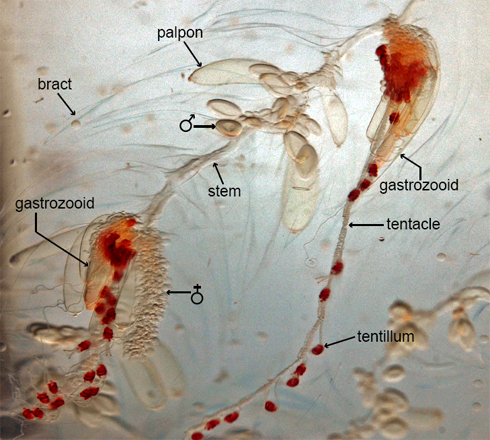
One cormidium of the siphosome of Agalma elegans, showing the gastrozooid with a tentacle bearing many tentilla, palpons, bracts, and male and female reproductive organs.
© Keith Hiscock (MBA, Plymouth)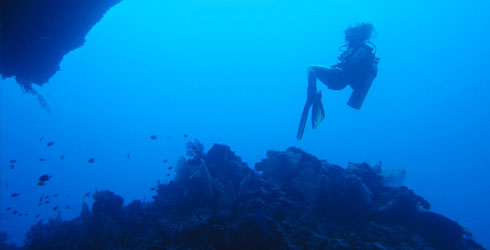
Agalma elegans usually lives below the surface to avoid turbulence, and is most frequently encountered by scuba divers.
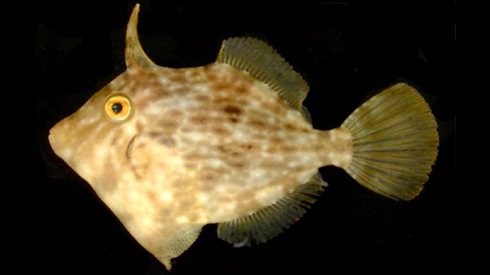
Oceanic filefishes of the family Monacanthidae have been observed preying on Agalma elegans.
© US National Oceanic and Atmospheric AdministrationAbout the author

Dr Gill Mapstone
Scientific Associate in the Zoology Department, researching cnidarian Siphonophora.
